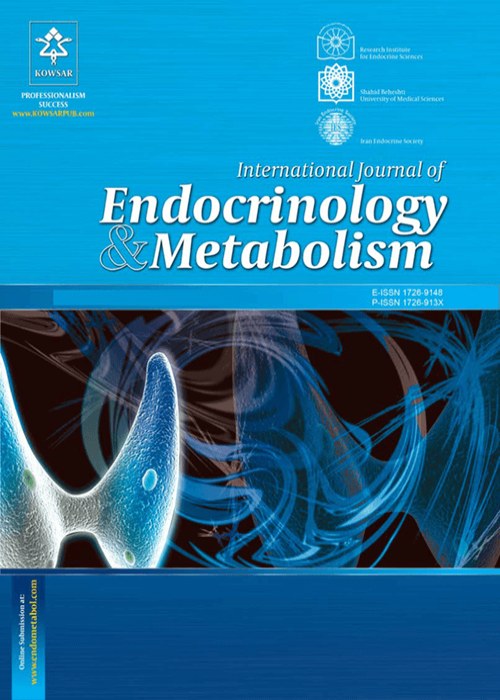Relationship Between Hormonal Variables and Bone Mineral Density, Muscle Force, and Fat Mass in Peripubertal Girls
Author(s):
Abstract:
Background
The muscle-bone unit represents an evolutionary system, in which both of its components are under the common control of the insulin-like growth factor I (IGF-I), sex hormones, and vitamin D. The mutual interactions between these hormones maintain integrity, growth and maturation of pubertal bone mass. Thus, insufficiency of any of these hormones will negatively influence development of the skeleton during puberty.Objectives
The aim of the study as to analyse the correlation between muscle mass, total bone mineral content (BMC), bone mineral density (BMD) of the lumbar spine (BMD L1-L4), and serum or urine hormones.Materials And Methods
Total BMC (g) and areal BMD L1-L4 (g/cm2 and Z-score) as well as muscle mass and fat mass (g) were assessed by means of dual-energy X-ray absorptiometry (DXA). The Z-score is the number of standard deviations a patient´s BMD which differs from the average BMD of their age, sex, and ethnicity. This Parameter is used in children. Muscle force (N) was measured using a dynamometer.Results
The simple correlations showed strong positive associations between BMC or BMD L1-L4 (g/cm2) and serum phosphate, estradiol, insulin-like growth factor (IGF-I), leptin and fat masses, and muscle force (P < 0.001 for all parameters). Positive correlations were also observed between BMD and serum phosphate (P < 0.01), IGF-I (P < 0.01), estradiol (P < 0.001), leptin (P < 0.01), fat and lean mass (P < 0.001 and P < 0.001, respectively) and muscle force (P < 0.001). The partial correlations, after eliminating the impact of height, Tanner stage, and physical activity level, confirmed positive relationships between either BMC or BMD L1-L4 and lean mass (P < 0.001 and P < 0.001, respectively) and fat mass (P < 0.001 for BMC and BMD). Furthermore, a positive relationship was observed between serum leptin and both BMC and BMD (Z score) (P < 0.05 and P < 0.05, respectively). After removing the effects of height, Tanner stage, and physical activity, positive associations were observed between lean mass and IGF-I (P < 0.01), leptin levels (P < 0.05), and muscle force (P < 0.01).Conclusions
On the basis of the study results, it can be expected that low values of lean or fat mass, and insufficient production of IGF-I or leptin, could negatively influence bone development in pubertal girls.Language:
English
Published:
International Journal of Endocrinology and Metabolism, Volume:9 Issue: 3, Jun 2011
Page:
391
magiran.com/p949009
دانلود و مطالعه متن این مقاله با یکی از روشهای زیر امکان پذیر است:
اشتراک شخصی
با عضویت و پرداخت آنلاین حق اشتراک یکساله به مبلغ 1,390,000ريال میتوانید 70 عنوان مطلب دانلود کنید!
اشتراک سازمانی
به کتابخانه دانشگاه یا محل کار خود پیشنهاد کنید تا اشتراک سازمانی این پایگاه را برای دسترسی نامحدود همه کاربران به متن مطالب تهیه نمایند!
توجه!
- حق عضویت دریافتی صرف حمایت از نشریات عضو و نگهداری، تکمیل و توسعه مگیران میشود.
- پرداخت حق اشتراک و دانلود مقالات اجازه بازنشر آن در سایر رسانههای چاپی و دیجیتال را به کاربر نمیدهد.
In order to view content subscription is required
Personal subscription
Subscribe magiran.com for 70 € euros via PayPal and download 70 articles during a year.
Organization subscription
Please contact us to subscribe your university or library for unlimited access!


